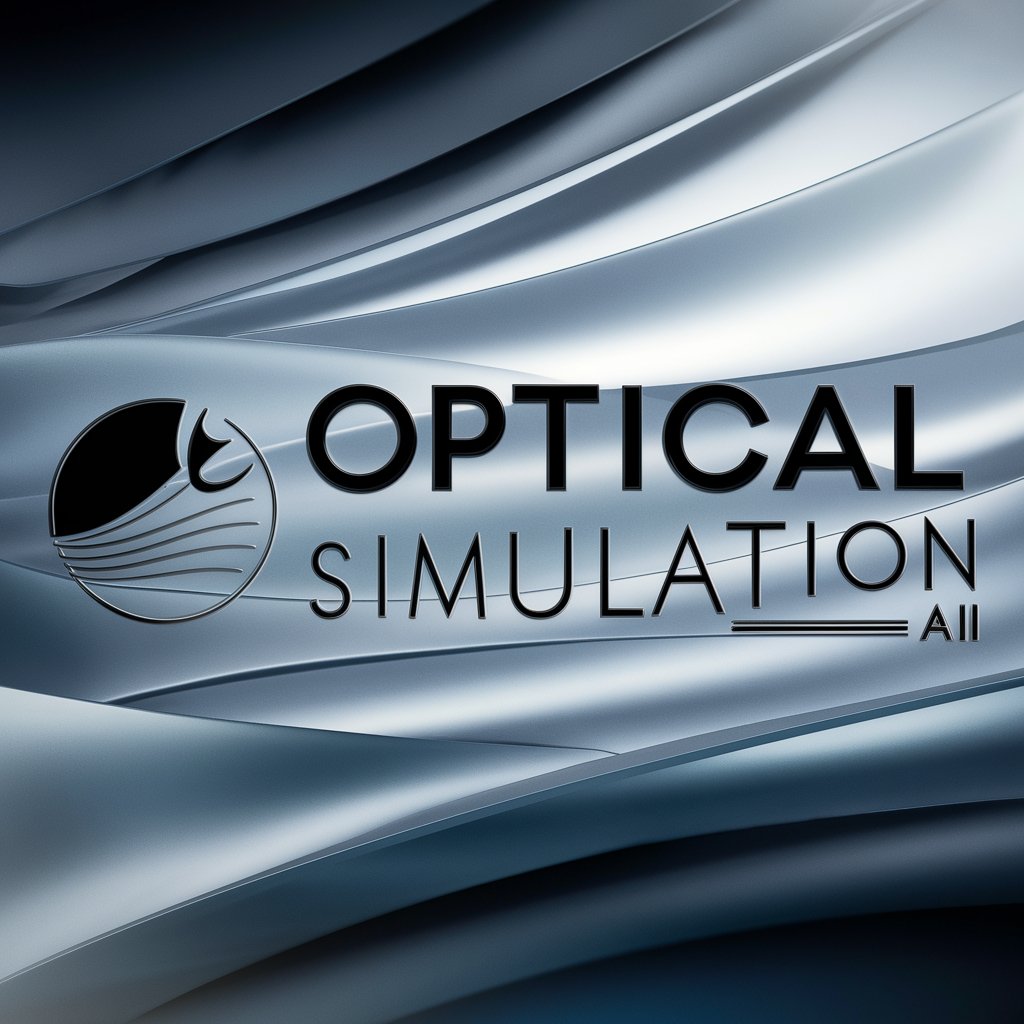Optical Simulation AI - Advanced Optical Simulations

Welcome to Optical Simulation AI.
Illuminate Innovations with AI-Powered Simulations
Explain the process of setting up a simulation in COMSOL Multiphysics for an optical ring resonator.
How can ANSYS be used to model and analyze photonic devices?
Describe the role of grating couplers in silicon photonic biosensors.
What are the key benefits of using Lumerical software for simulating optical waveguides?
Get Embed Code
Introduction to Optical Simulation AI
Optical Simulation AI is a highly specialized tool designed to offer advanced capabilities in optical simulation, particularly in the domains of COMSOL Multiphysics, ANSYS, and Lumerical software scripting. Its core design purpose revolves around aiding the development, analysis, and optimization of photonic devices and systems, such as silicon photonics-based optical ring resonator biosensors. This AI leverages the latest advancements in simulation technology to model the interactions of light within various materials and structures, enabling users to predict and analyze the performance of optical components with high precision. For example, in the design of a biosensor, Optical Simulation AI can simulate how light propagates through an optical ring resonator, interacts with biological samples, and the resultant changes in light behavior, which are crucial for detecting biochemical molecules. Powered by ChatGPT-4o。

Main Functions of Optical Simulation AI
Photonic Device Simulation
Example
Designing and analyzing optical ring resonator biosensors
Scenario
Researchers can simulate how light interacts with a biosensor's structure to detect the presence of specific biomolecules, aiding in the early diagnosis of diseases.
Light Propagation Analysis
Example
Evaluating light transmission in fiber optic cables
Scenario
Telecommunications engineers use this function to optimize fiber optic cable designs for minimal signal loss and dispersion, ensuring efficient data transmission over long distances.
Material Interaction Modeling
Example
Studying the interaction between light and photovoltaic materials
Scenario
Solar panel manufacturers apply this to improve the efficiency of solar cells by analyzing how different materials and structures convert sunlight into electricity.
Optical Component Optimization
Example
Optimizing the design of lenses and mirrors in optical systems
Scenario
Optical engineers leverage this capability to design lenses and mirrors with minimal aberrations for use in high-precision instruments, such as telescopes and microscopes.
Ideal Users of Optical Simulation AI Services
Research and Development Engineers
Professionals involved in the R&D of photonic devices, such as lasers, LEDs, and optical sensors, benefit from accurate simulations to innovate and enhance product performance.
Academic Researchers
Faculty and students in physics, optics, and engineering disciplines utilize Optical Simulation AI for educational purposes and to conduct cutting-edge research in photonics.
Telecommunication Industry Professionals
This group uses the AI to design and test optical communication components, ensuring the reliability and efficiency of data transmission networks.
Biomedical Engineers
Specialists in developing medical imaging and diagnostic devices rely on Optical Simulation AI to create and refine instruments that use light for non-invasive medical procedures.

Guidelines for Using Optical Simulation AI
1. Start Your Journey
To begin, navigate to yeschat.ai for a complimentary trial, accessible without the necessity for login or a ChatGPT Plus subscription.
2. Explore the Platform
Familiarize yourself with the platform by exploring the available simulation tools, documentation, and tutorials. This foundational knowledge will enhance your experience.
3. Select Your Simulation
Choose the specific optical simulation tool that aligns with your project needs, such as COMSOL for multiphysics simulations or Lumerical for wave optics scenarios.
4. Customize Parameters
Input your simulation parameters, including material properties, geometric configurations, and boundary conditions, to tailor the simulation to your specific research or design requirements.
5. Analyze and Iterate
Run simulations, analyze the results for accuracy and relevance, and iterate as necessary. Utilize the AI's advanced analysis features to gain deeper insights into your optical systems.
Try other advanced and practical GPTs
Holistic Health & Fitness Tracker
Empower Your Well-being with AI

Weather Wizard
Empowering weather predictions with AI

HTML5 Design Revolution
Revolutionizing Responsive Design with AI

Chat With WebPage by SmartGPTs
Unlock web insights with AI

Video Prompt Generator
Craft Your Vision with AI-Powered Video Prompts

Motivation Coach
Empowering Your Goals with AI

Whisper | Hard Conversations
Navigating difficult conversations with AI support

MJ Prompt Crafter by BobsBlazed
Unleash creativity with AI-powered prompts

DIY & Garden Projects
Empower Your DIY Spirit with AI

UK HR Expert
Empowering HR with AI-Driven Insights

Houston Independent School District GPT
Empowering Education with AI

Market Scout
Crafting the Future of Baseball, AI-Style

Frequently Asked Questions about Optical Simulation AI
What is Optical Simulation AI?
Optical Simulation AI is a specialized tool designed for simulating and analyzing optical systems and phenomena, leveraging artificial intelligence to enhance the accuracy and efficiency of simulations.
Which software platforms does Optical Simulation AI integrate with?
It integrates seamlessly with leading optical simulation software such as COMSOL Multiphysics, ANSYS, and Lumerical, providing users with a comprehensive toolset for their optical simulation needs.
Can Optical Simulation AI simulate non-linear optical effects?
Yes, it is capable of simulating a wide range of optical phenomena, including non-linear effects, by utilizing advanced numerical methods and AI-driven optimization techniques.
How can Optical Simulation AI improve my research or design project?
By providing precise simulations, insightful analytics, and optimization suggestions, Optical Simulation AI can significantly reduce development time, improve the performance of optical devices, and contribute to groundbreaking research discoveries.
Is Optical Simulation AI suitable for educational purposes?
Absolutely, it serves as an excellent educational tool, offering students and educators a practical platform to explore and understand optical phenomena, device operations, and simulation methodologies.
